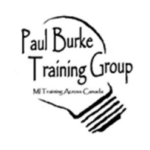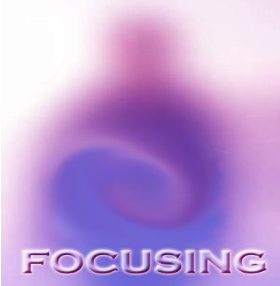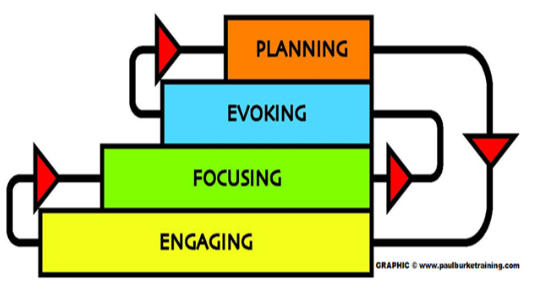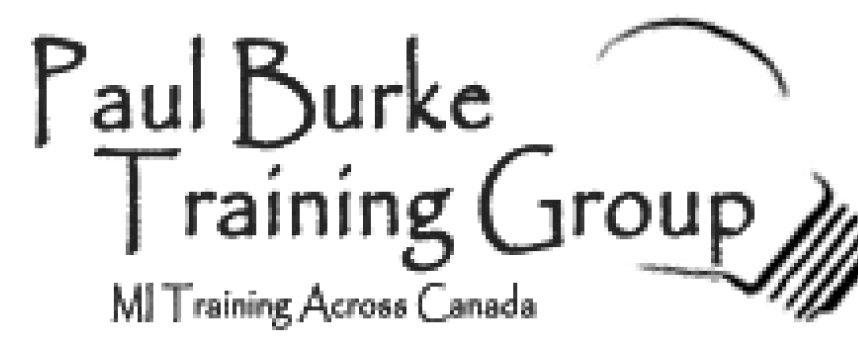
Paul Burke Training Group
Telephone: 1-250-385-6468. Toll-Free: 1-855-MI-TRAINERS
Web: www.paulburketraining.com
E-mail: info@paulburketraining.com
Beyond training: Looking at learning MI in a whole new light!
Thoughts on Improved Practice (TIP) #2311

“In order to be an effective guide you need to know where you are going. With at least the basic groundwork for engagement in place, the next process in MI is to clarify the goal toward which you will move together” (p. 91)
My experience in facilitating MI workshops has been that too many people work very hard at engaging with the client and with his/her point of view and then, once there, jump all the way into planning for change. Others engage and then they “leap-frog” into eliciting the client’s ideas about how to pursue a change – long before the client has heard himself describe what it is that he would like to focus on in this particular conversation!
If you were to go to a theatre where the movie was completely out of focus – you would demand that the projectionist start it over again – and get rid of the “blur” so that you could see what was going on. It’s the same in MI conversations. It’s necessary to reduce the blur to a sharp focus – where you and your client both have the same picture of what is supposed to be “in focus” as you work together!
The Four Process of MI: Focusing = “Get rid of the Blur!”
Engaging with your client; with their logic; with their way of understanding things and their situation, is a first and necessary step in constructing an MI conversation. Once engaged however, it’s crucial to bring an “issue” into focus. The issue or topic-of-focus within the dialogue aids both the helper and the client by ensuring that they are both working on, or toward, the same purpose in the conversation. An “issue” can only be worked on, or worked toward, or worked around – if both parties are clear about “what’s in focus”. Similarly, only when both the MI helper and the client find a mutual focal point can directionality be established or measured in an MI interview. If you can’t see what’s in focus, how will you know that you are moving in that direction?
Assessment interviewing may be part of the focusing process. In my experience, so long as some skillful work with reflective listening and open-questioning has been done to facilitate the process of engaging with the client (and engaging the client in the MI conversation at hand), assessment interviewing can be a useful asset to bringing sharper focus to what needs to be discussed and worked on in an MI session. Of course, like the engaging process, and like assessment itself, focusing never stops! In MI, bringing focus to a conversation, sharpening that focus, and modifying it over time is the way that we know a conversation is moving in a planned (specified) direction – and in a helpful and strategic direction! Without knowledge of the focus for a conversation, you and your client may well end up chatting away, in a highly engaged manner, but with very little “collaboration”, or “partnership” focus. Partnership and collaboration involve two people moving forward, together, in the same general direction. Focus is what provides the all-important “general direction” that is, by definition, an essential part of MI interviews.
A metaphor that I have found useful in understanding the focusing process is that of the trekking guide whose job it is to work alongside the hiker – to help him keep moving in the right direction. A good guide assists her client to help him avoid tangents that might get him lost. In this scenario, a good guide might need to use a pair of binoculars from time to time and focus on a point somewhat off in the distance to bring more clarity as to which direction the hiker ought to be going. In MI conversations, as in all journeys, all roads can lead to Mecca – provided that someone knows where Mecca is! Of course, it’s also helpful for both the trekker and her guide to know that Mecca is the destination of choice! (Sometimes there are landmarks along the way to the ultimate destination and a good guide will keep tabs on these as well – in order to free her client up to do the hard work of the trekking!

Sometimes the process of focusing is a simple one – because the client comes into the conversation with a clear sense of the intended goal; of the intended destination and even some of the landmarks that line the way. Other times, the process is not as easy.
Imagine that your client comes in to see you because his wife insists that unless he gets help soon, she will leave him. He says that she feels that he drinks too much and that his alcohol use is interfering with the intimacy and sense of “partnership” that they used to enjoy. He disagrees. He says that while his drinking may have increased a little in the last few years, he thinks it has more to do with physical health problems. In the last few years, he says he has not slept well at all. He gets fewer than 5 hours of sleep each night. He often wakes up very early in the morning. His appetite has also been very poor. He has lost nearly forty pounds since his son was killed overseas while serving in the armed forces a few years ago. He worries a lot about their financial future as well – made worse by the fact that his boss has hinted that there may be more layoffs coming in the year ahead. His sex life has “tanked” and he says that for the last year or more his wife has insisted that he sleep in the spare room, given that his sleeping problems keep her awake at night. He hasn’t talked to his doctor about any of this. He hasn’t seen a doctor in over four years, he says, because he doesn’t want a “lecture” about his cholesterol problem and high blood pressure again.
The above situation may sound complex. It is. Most situations are.
So – where does one begin to focus? Is this a case for marriage counselling? Family systems intervention? Depression assessment? Substance abuse intervention? Grief work? Sex therapy? Referral for medical assessment?
In truth, it is likely that all of this client’s issues and concerns are connected. But – where to start?
It is beyond the scope of this introductory TIP on focusing to describe the myriad ways that you and your client might begin to bring focus to the conversation. For now, suffice it to say that if you and the client begin to “map” the variety of agenda items that could be brought into focus, in time it will become obvious to both of you as to the most logical place to start. After all, as I say in virtually every workshop – “the hip bone is connected to the thigh bone which is connected to the knee bone which is connected to the …”. As you and the client begin to explore the variety of “issues” or “concerns” that are possible within the conversation, a mutual focal point is very likely to emerge. For the client example used here, it might be that “taking steps to get back to feeling good again” is the beginning focus, along with a goal of completed a comprehensive biopsychosocial assessment process that might shed some light on which roads might most efficiently lead to Mecca.

Focusing is a process that arises out of engagement. It is all about determining the “North Star” for a conversation so that you, and your client, and your clinical expertise can make decisions about what constitutes forward momentum.

